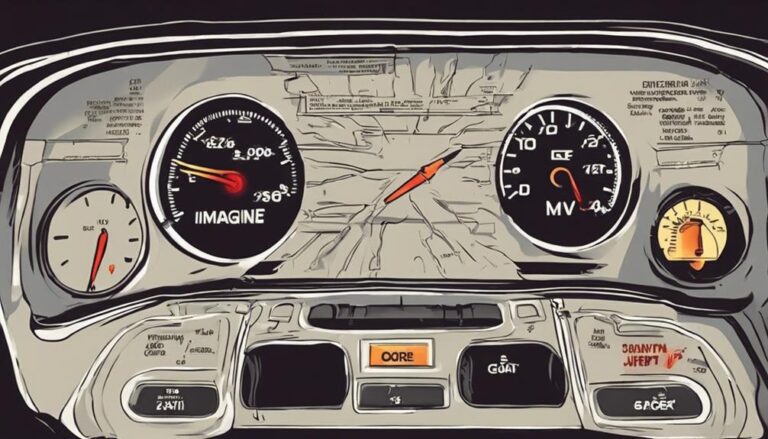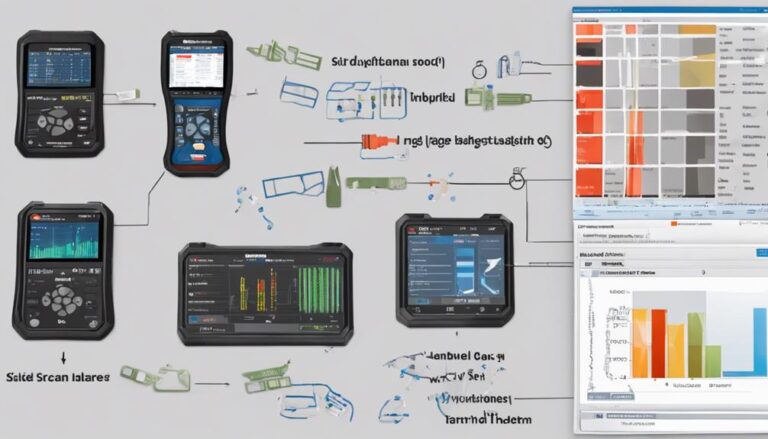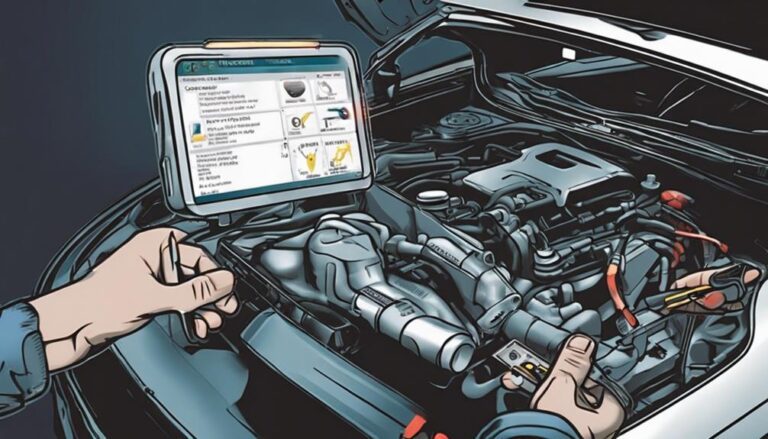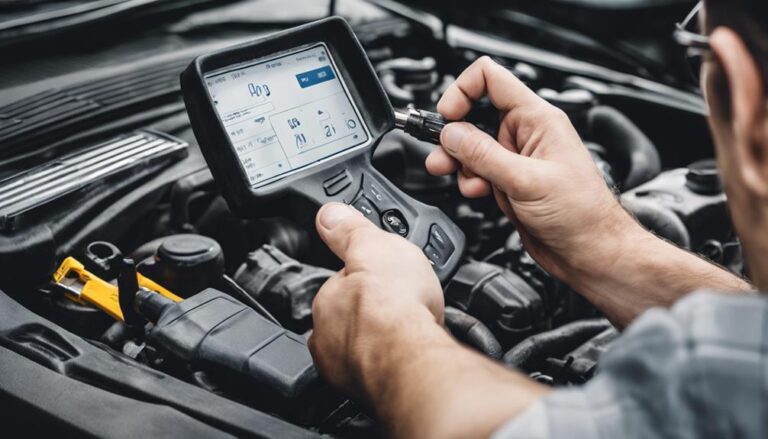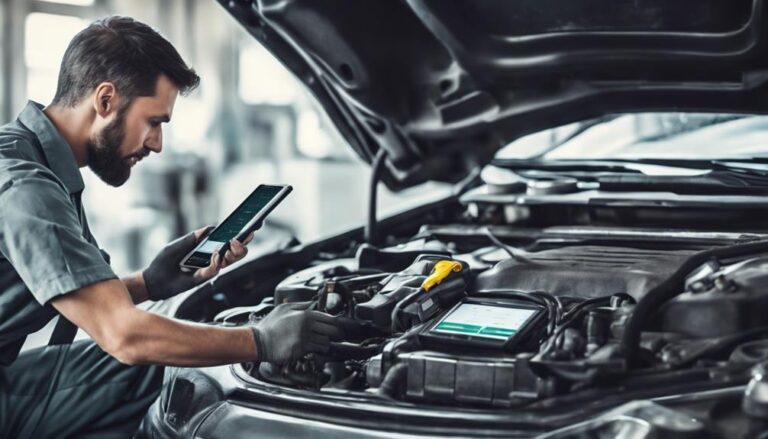10 Best Reasons for Check Engine Light
If you've ever had the check engine light come on in your car, you know how concerning it can be. It's a signal that something is amiss under the hood.
But did you know there are specific reasons why it illuminates? Understanding these triggers can provide valuable insights into your vehicle's health and potentially save you from costly repairs down the line.
So, what are the top 10 reasons for the check engine light to appear, and how can you address them effectively? Let's explore these common issues and empower you to make informed decisions about your car's maintenance.
Key Takeaways
- Oxygen sensor failure impacts fuel efficiency and engine performance significantly.
- Ignition system issues cause misfires, poor performance, and increased fuel consumption.
- Vacuum leaks affect engine performance and emissions, requiring swift repair.
- EGR valve failure leads to emissions control problems, reduced fuel efficiency, and engine performance issues.
Oxygen Sensor Failure
If your vehicle's oxygen sensor malfunctions, immediate attention is crucial to prevent significant fuel inefficiency and potential damage to the catalytic converter. Oxygen sensors are vital components of your vehicle's emission control system, responsible for monitoring the oxygen levels in the exhaust gases to regulate the fuel mixture for optimal engine performance. When a sensor malfunctions, it can lead to a decrease in fuel efficiency by up to 40%, impacting your vehicle's overall performance.
To address oxygen sensor failure, sensor diagnostics are essential to pinpoint the exact issue affecting your vehicle's emission control system. Ignoring the warning signs can't only result in decreased fuel economy but also lead to more severe consequences, such as damage to the catalytic converter. Modern vehicles typically house 2-4 oxygen sensors within the exhaust system, making it crucial to conduct thorough diagnostics to ensure all sensors are functioning correctly. Invest in timely sensor diagnostics and replacement to maintain your vehicle's performance and prevent costly repairs down the road.
Loose Fuel Cap
When it comes to your vehicle's check engine light, a loose fuel cap can be a significant culprit.
Ensuring the proper sealing of the gas cap is crucial to prevent issues in the evaporative emissions system.
Regularly tightening your fuel cap is a simple yet essential maintenance task to avoid triggering the check engine light unnecessarily.
Fuel Cap Importance
A crucial component in maintaining proper vehicle emissions control and preventing unnecessary check engine light alerts is ensuring the fuel cap is securely tightened.
Fuel Cap Importance:
- Evaporative Emissions: A loose fuel cap can trigger the check engine light by causing evaporative emissions system issues.
- Preventative Maintenance: Proper closure of the gas cap is essential to prevent the light from coming on unnecessarily.
- Issue Resolution: Replacing a loose or faulty gas cap can often resolve the problem and turn off the check engine light.
Tightening Fuel Cap
Properly tightening your fuel cap is a crucial step in addressing the common trigger of a loose fuel cap leading to the check engine light. Failing to secure the fuel cap can disrupt the evaporative emissions system, causing fuel vapor leaks and potential fuel system issues.
By ensuring the fuel cap is tightly sealed, you uphold emission control strategies and maintain system integrity. This simple act of fuel system maintenance can prevent further complications, saving on repair costs and enhancing fuel efficiency.
Checking and securing the fuel cap is a quick and easy task that plays a significant role in addressing the check engine light promptly. Take charge of your vehicle's health by paying attention to this often overlooked yet essential component.
Catalytic Converter Issues

When your catalytic converter malfunctions, it impacts the efficiency of your emissions control system.
This can lead to decreased engine performance and increased harmful emissions.
Addressing catalytic converter issues promptly is crucial to maintain engine efficiency and meet environmental regulations.
Efficiency and Emissions
Catalytic converter issues impacting efficiency and emissions can trigger the check engine light, necessitating prompt attention to prevent environmental concerns. When left unresolved, these problems can lead to decreased fuel efficiency and increased emissions, affecting your vehicle's performance.
To address this issue effectively, consider the following:
- Fuel Efficiency: A failing catalytic converter can directly impact your fuel efficiency, causing you to spend more on gas.
- Emissions Control: Malfunctioning catalytic converters can result in increased emissions, contributing to environmental pollution.
- Timely Attention: Promptly addressing catalytic converter issues can prevent further damage and costly repairs down the line.
Engine Performance Impact
To understand the impact of catalytic converter issues on engine performance, one must recognize how these problems can significantly affect the vehicle's overall power output and acceleration. When a catalytic converter is not functioning correctly, it can lead to reduced power output, causing slower acceleration and decreased performance. Here is a breakdown of the effects of catalytic converter issues on engine performance:
| Issue | Impact |
|---|---|
| Reduced power output | Decreased acceleration capabilities |
| Clogged converter | Impaired engine performance |
| Malfunctioning converter | Poor power delivery |
It is crucial to address catalytic converter problems promptly to maintain optimal engine performance and ensure efficient power output.
Spark Plug and Ignition Problems
Dealing with spark plug and ignition problems promptly is crucial for maintaining optimal engine performance and preventing costly repairs. Ignition system maintenance is vital to ensure your engine runs smoothly. If you neglect spark plug and ignition issues, you risk experiencing engine misfires, which can lead to reduced performance and fuel efficiency.
Here are three key points to consider:
- Misfires Impact Performance: Faulty spark plugs can trigger misfires, causing your engine to perform poorly and consume more fuel than necessary.
- Ignition Coil Problems: Issues with the ignition coil can result in rough idling, stalling, and difficulties starting your engine, affecting overall drivability.
- Worn-out Wires Cause Issues: Worn-out spark plug wires can lead to poor acceleration, engine hesitation, and increased emissions, impacting both performance and environmental factors.
Addressing these spark plug and ignition concerns promptly can enhance your engine's performance and longevity, preventing potential damage and costly repairs down the road.
Faulty Spark Plug Wires
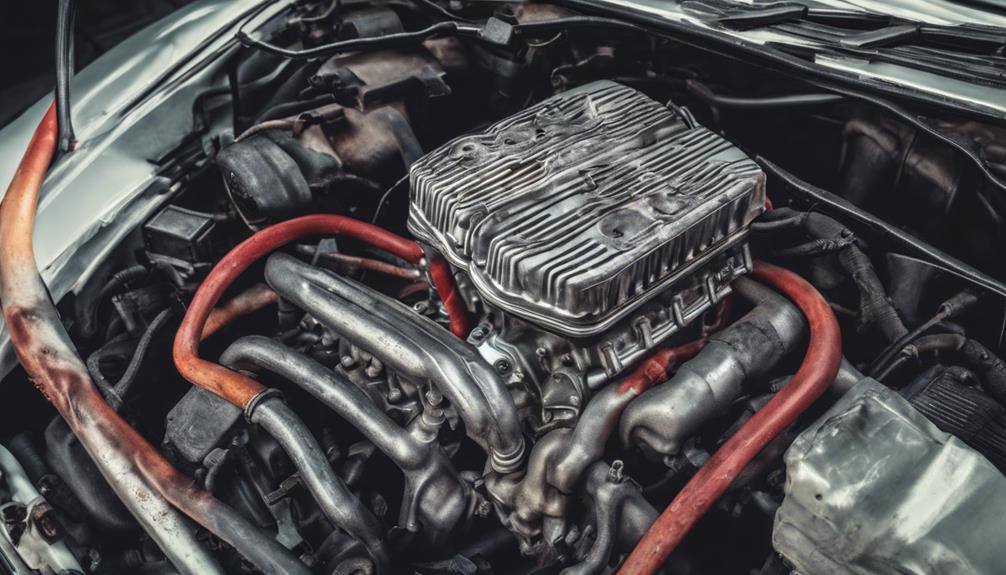
Faulty spark plug wires can significantly impact engine performance, leading to issues such as misfires, rough idling, and decreased fuel efficiency. Damaged or worn-out spark plug wires can disrupt the ignition system, affecting overall engine function. Symptoms like engine hesitation, stalling, and difficulty starting the vehicle indicate potential wire problems. To prevent these issues, regular inspection and replacement of spark plug wires are crucial. Quality wires are essential for proper ignition timing, combustion, and engine power output. For preventive maintenance, consider checking spark plug wires during routine servicing to avoid performance setbacks. When troubleshooting engine issues, inspect the spark plug wires for any signs of wear or damage. Ensuring the integrity of spark plug wires can optimize engine performance and fuel efficiency.
| Preventive Maintenance | Troubleshooting Tips |
|---|---|
| Regular inspection and replacement | Check for wear or damage |
| Quality spark plug wires | Look for symptoms like misfires |
| Optimal engine function | Ensure proper ignition timing |
Mass Airflow Sensor Malfunction
When experiencing issues with engine performance, a malfunctioning mass airflow sensor could be the culprit. Here are three key points to consider:
- Impact on Engine Performance: A faulty mass airflow sensor can lead to inaccurate air intake readings, disrupting the fuel-air mixture balance crucial for optimal engine function.
- Symptoms to Watch For: Keep an eye out for signs such as poor acceleration, rough idling, and reduced fuel efficiency, as these can indicate a malfunctioning mass airflow sensor.
- Maintenance and Replacement: While cleaning the sensor may offer a temporary solution, in cases of severe malfunction, sensor replacement might be necessary for accurate airflow sensor calibration and improved engine performance.
Aftermarket Alarm Troubles
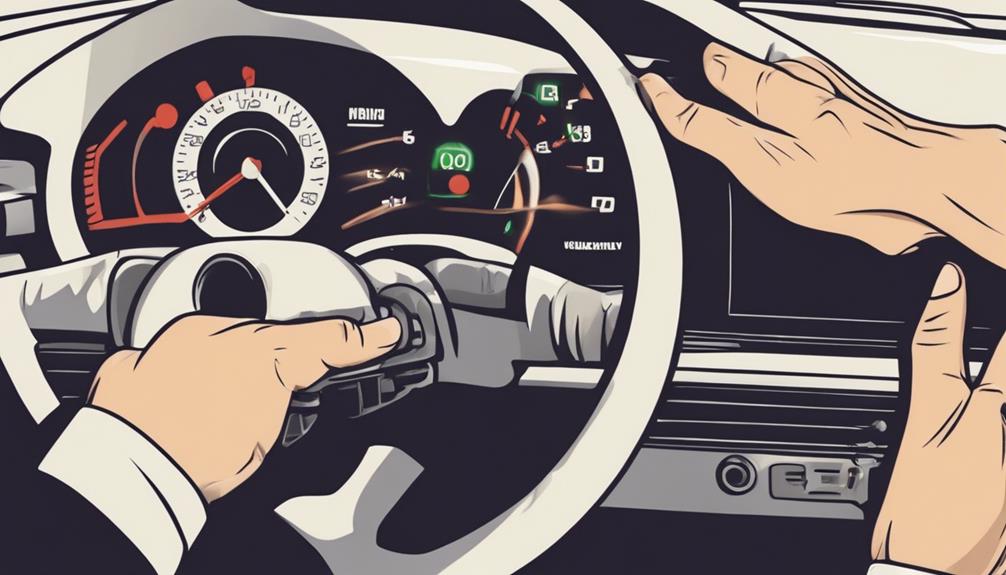
Installing aftermarket alarms may sometimes trigger the check engine light due to electrical interference or faulty connections. Common causes of aftermarket alarm troubles leading to check engine light issues include wiring problems and incompatible components disrupting the vehicle's electrical system.
When troubleshooting such problems, it's crucial to check wiring connections, sensors, and control modules to pinpoint the root cause accurately. Incorrectly installed aftermarket alarms can send false error codes to the Engine Control Unit (ECU), prompting the check engine light to illuminate.
To avoid these issues, ensure proper installation and maintenance of aftermarket alarms. Regularly inspecting the alarm system for any signs of wear or damage can prevent check engine light triggers and ensure the smooth operation of your vehicle.
Vacuum Leaks
Vacuum leaks in the vehicle's system can trigger the Check Engine Light by causing an imbalance in the air-fuel mixture. Detecting and repairing these leaks is crucial to maintain your engine's performance. Here's what you need to know:
Vacuum Leak Detection:
- Symptoms: Look out for rough idling, stalling, and decreased engine performance.
- Emissions Impact: Vacuum leaks can lead to increased emissions, affecting your vehicle's efficiency.
- Professional Diagnosis: Utilize smoke tests or pressure tests for accurate identification.
When it comes to repairing vacuum leaks, swift action is key. Addressing leaks promptly can prevent further engine damage and even enhance fuel economy. Remember, detecting these leaks may require specialized tools and expertise. By staying vigilant and promptly addressing vacuum leaks, you can ensure your vehicle runs smoothly and efficiently.
Exhaust Gas Recirculation Valve Failure
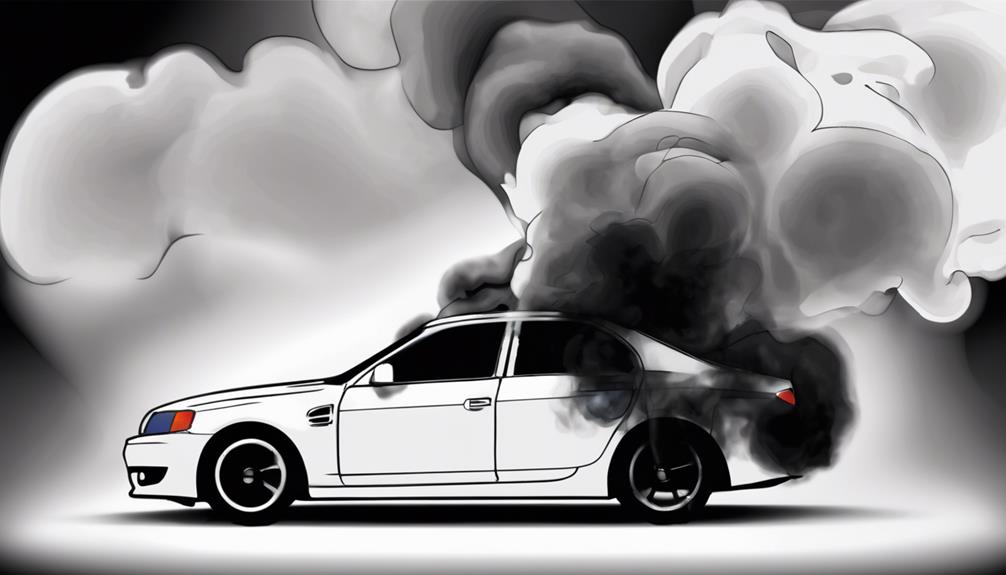
Experiencing issues with your vehicle's Exhaust Gas Recirculation (EGR) valve can lead to the Check Engine Light being triggered due to its impact on emissions control. When the EGR valve fails, it disrupts the engine's ability to recirculate exhaust gases, affecting the combustion process.
This malfunction results in increased nitrogen oxide emissions, reduced fuel efficiency, and compromised engine performance. The EGR valve plays a crucial role in reducing harmful emissions by reintroducing a portion of exhaust gases into the combustion chamber.
Recognizing signs of EGR valve failure such as rough idling, engine knocking, or decreased power is vital for timely intervention. Addressing EGR valve issues promptly not only helps maintain optimal engine function but also contributes to reduced emissions and improved efficiency.
Therefore, if you notice any symptoms indicating EGR valve problems, it's recommended to seek professional assistance to rectify the issue promptly and ensure your vehicle operates efficiently while minimizing its impact on the environment.
Dead Battery
Upon experiencing a dead battery, the check engine light may illuminate as a result of power loss to essential engine components. This can be a concerning issue; however, taking proactive steps can help you address it effectively:
- Preventive maintenance: Regularly checking and maintaining the battery's health can prevent unexpected dead battery situations and subsequent check engine light triggers. Simple tasks like cleaning terminals and ensuring proper connections can go a long way in maintaining battery health.
- Battery replacement: If you notice signs of a weakening battery, such as slow engine cranking or dimming lights, consider replacing the battery promptly. A new battery can prevent voltage fluctuations that may lead to the check engine light coming on.
- Timely action: Addressing a dead battery promptly is crucial. Doing so can prevent further electrical issues, potential engine damage, and unnecessary check engine light illuminations. Remember, taking swift action can save you from more significant troubles down the road.
Frequently Asked Questions
What Is the Most Common Reason for a Check Engine Light?
When your check engine light comes on, the most common reason is a loose or faulty gas cap. Tightening or replacing it can often resolve the issue, preventing fuel inefficiency and emission problems. Keep an eye on it!
Why Is My Check Engine Light on but My Car Runs Fine?
When your check engine light misbehaves and your car purrs contently, it's likely a false alarm from a sensor malfunction. Don't dismiss the warning. Address it promptly to safeguard performance and savings.
What Is the First Thing to Check When the Check Engine Light Comes On?
When the check engine light appears, first check the gas cap. A loose or faulty cap can trigger the light due to evaporative emissions issues. Tighten the cap, drive a few cycles for the system to reset.
What Is the Most Common Reason for a Service Engine Soon Light?
When your Service Engine Soon light pops up, the most common culprit is a loose or faulty gas cap. Ignoring maintenance may lead to fuel vapor leaks. Remember, prompt attention to this issue can prevent further problems.
Conclusion
In conclusion, addressing the 10 best reasons for a check engine light is essential for maintaining the health of your vehicle.
By promptly resolving issues such as oxygen sensor failure, loose fuel caps, and catalytic converter problems, you can prevent further damage and costly repairs.
Remember, taking proactive measures and staying on top of maintenance won't only save you time and money, but also ensure the longevity of your car's engine and overall performance.


